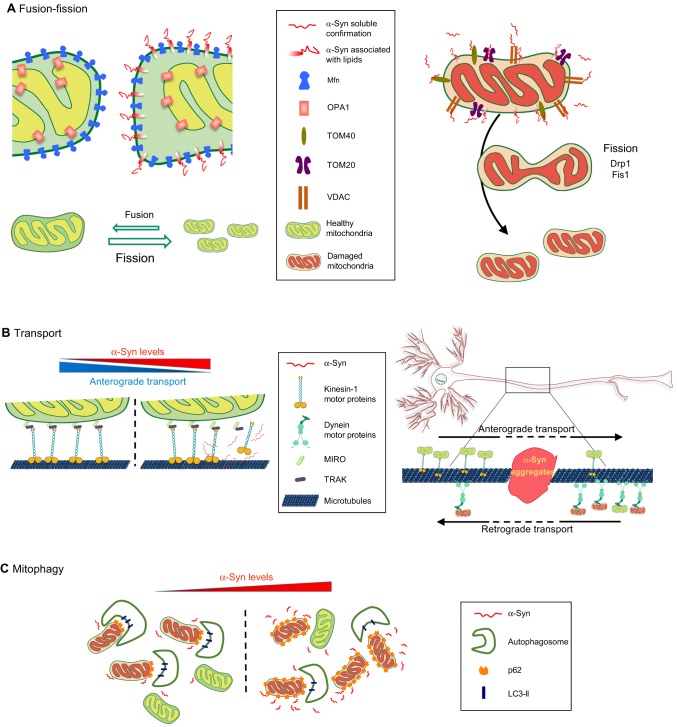Fig. 3.
α-Syn in mitochondrial dynamics. A schematic highlighting the putative pathogenic roles of α-Syn in key processes involved in mitochondrial homeostasis: fusion, fission, transport and mitophagy. (A) Fusion-fission: overexpression of wild-type (WT) or mutated α-Syn increases its localization to the outer mitochondrial membrane (OMM). This interaction of α-Syn with lipids reduces membrane curvature, thus reducing fusion and pushing the balance towards fission (left panel). α-Syn is thought to interact with VDAC, TOM20 and TOM40, disrupting their function and leading to induction of mitochondrial fission (right panel) (see main text for details). (B) Transport: mitochondria (healthy and damaged) are transported along the axon between the soma and synapses of neurons via anterograde and retrograde transport (see Box 1 and Fig. 2). Overexpressed α-Syn may sequester or reduce the function of the molecular motors involved, decreasing the anterograde transport of mitochondria (left panel). α-Syn oligomerization or aggregation in axons may physically impair the transport of mitochondria (right panel). (C) Mitophagy: damaged mitochondria are cleared by mitophagy (see Box 1 and Fig. 2). α-Syn overexpression is thought to reduce levels of LC3-II and decrease autophagosome formation, resulting in the accumulation of mitochondria tagged by p62 for mitophagy (see main text for details).

